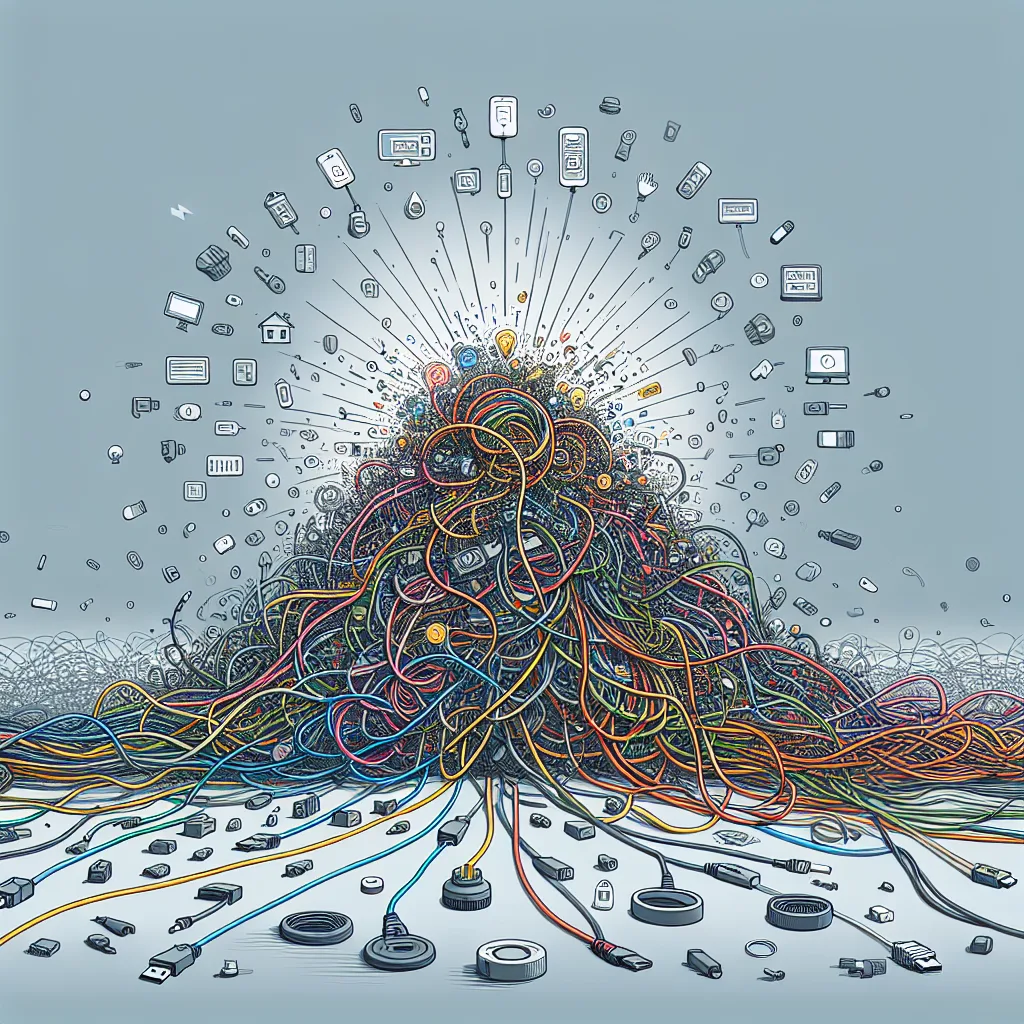Feeling overwhelmed by too many smart home apps? Follow a personal journey from device chaos to a unified system with a universal hub. Tame your tech today.
It started innocently enough. A smart bulb here, a smart plug there. Then came the smart scale, the robot vacuum, and a few security cameras. Before I knew it, my home was getting pretty smart. The problem? I wasn’t.
I’d built a collection of devices from a half-dozen different brands: Xiaomi, Tapo, WiZ, Sensibo, you name it. Each one had its own app, its own rules, and its own little world. My phone’s home screen was a graveyard of colorful icons, and controlling my “smart” home felt like spinning plates. I had a de-humidifier app, a camera app, a lighting app, a sensor app… it was a mess.
The Tipping Point
The breaking point came last week. I got really interested in preventing water damage after a friend had a costly leak. So, I ordered some Aqara water leak sensors. I’d done a bit of reading and saw they used Zigbee, the same wireless protocol my Xiaomi hub uses.
“Perfect,” I thought. “They should just connect.”
They arrived. I unboxed them, excited to finally add a genuinely useful layer of protection to my home. I opened my Xiaomi app, tried to add the new sensors, and… nothing. I tried again. I rebooted the hub. I triple-clicked the little button that’s supposed to put it in pairing mode. Still nothing.
The two devices, despite speaking the same language (Zigbee), refused to talk to each other. It turns out that many brand-specific hubs, like the one I had, are built to only play nice with their own family of devices.
That’s when it hit me. I was either going to have to return the sensors or buy another hub, adding yet another app to my collection. My smart home wasn’t just messy; it was fundamentally broken.
The Big Question: How Do You Fix the Chaos?
I spent a lot of time looking for a better way. My first thought was, “Should I just sell everything and buy from a single brand?”
That’s definitely an option. The appeal is obvious: one app, seamless integration, and no compatibility headaches. But it’s also a trap. You’re locked into one company’s ecosystem. What if they don’t make the best camera? Or their sensors are overpriced? Or they stop supporting a product you rely on? It felt too restrictive and, honestly, way too expensive.
A Better Way: Thinking in Protocols, Not Brands
The real solution isn’t about the brand name on the box. It’s about the technology inside it. Most smart home devices communicate using a few key wireless protocols:
- Wi-Fi: Super common. Most devices that plug into a wall, like smart plugs and cameras, use it. It’s convenient because you already have a Wi-Fi network. The downside is that it can crowd your network and devices can sometimes be slow to respond.
- Zigbee: A low-power mesh network. Devices can talk to each other to extend the network’s range, so you don’t have to worry about a sensor at the far end of the house reaching the hub. It’s fast and reliable. My Xiaomi and Aqara devices use this.
- Z-Wave: Very similar to Zigbee, it’s another popular mesh network protocol known for its reliability and security.
The problem wasn’t that I had devices using different protocols. The problem was that I had different hubs that couldn’t speak to all of them, and the hubs I did have were picky about brands.
The Answer: A Universal Smart Home Hub
This is where it all clicked. I don’t need another brand-specific hub. I need a universal hub.
Think of a universal hub as a master translator for your smart home. It’s a single piece of hardware (and a single app) that has radios for Wi-Fi, Zigbee, and Z-Wave all built in. Its software is designed from the ground up to be brand-agnostic. It doesn’t care if a sensor is from Aqara, a lightbulb is from Philips Hue, or a plug is from Tapo. If it speaks the right protocol, the hub can talk to it.
A few of the big names in this space are:
-
Hubitat: An all-in-one box that prioritizes local control, meaning your automations run inside your home, not on a cloud server. This makes it fast and private.
- SmartThings: A popular platform from Samsung that’s known for being user-friendly and compatible with a huge range of devices.
-
Home Assistant: This is the one I’m leaning towards. It’s an open-source platform that you typically run on a small computer like a Raspberry Pi. It’s definitely the most powerful and customizable option, but it requires a bit more of a DIY spirit. The community is huge, and the number of integrations is staggering.
So, what am I doing about those Aqara water sensors? I’m keeping them.
They’re no longer a problem; they’re the reason I’m finally fixing the root of the issue. Instead of buying an Aqara hub that just deepens the problem, I’m investing in a universal system that will let me bring all my rogue devices—the Xiaomi sensors, the WiZ bulbs, the Tapo plugs—under one roof.
It’s a project, for sure. But the thought of deleting a dozen apps from my phone and finally having a smart home that just works? That’s worth the effort.
